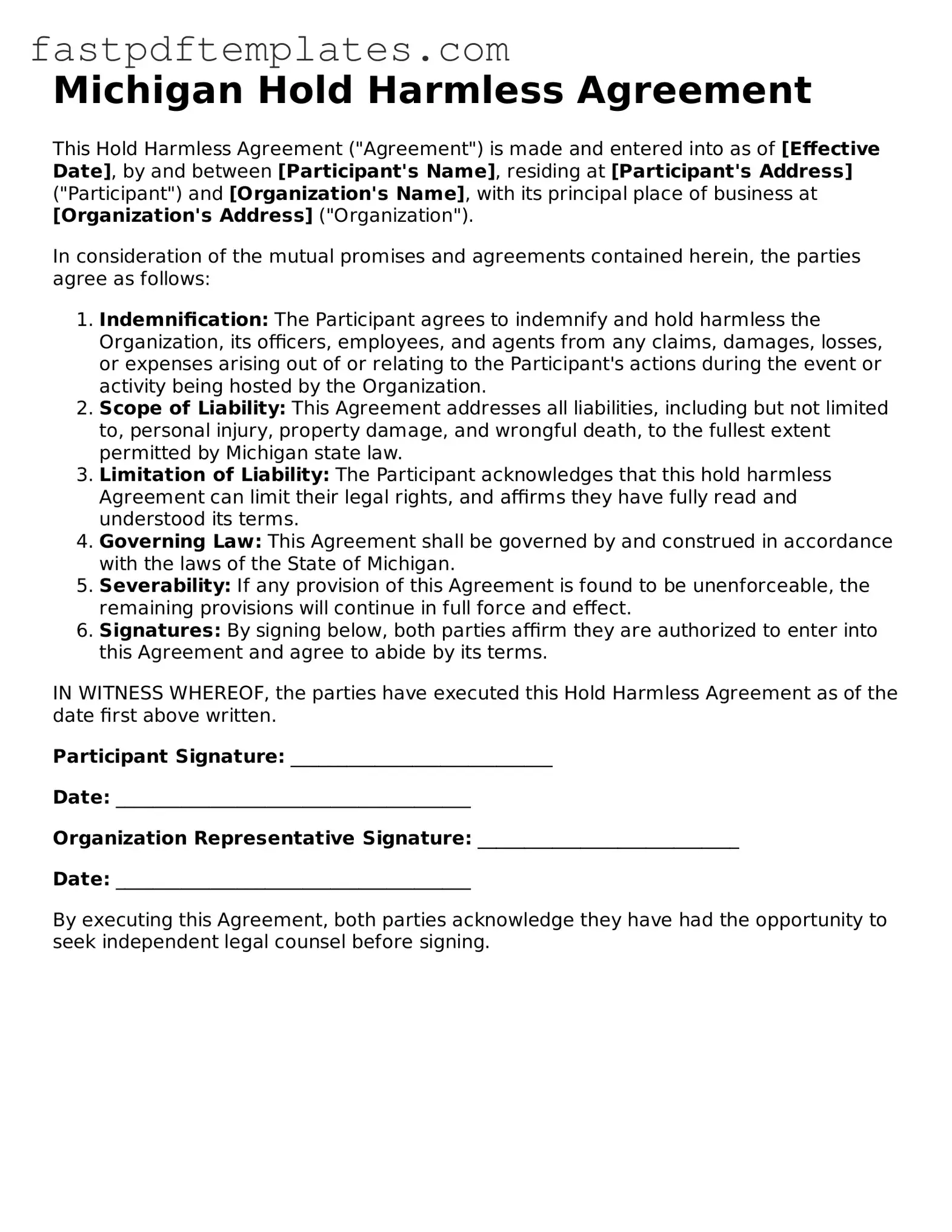Michigan Hold Harmless Agreement
This Hold Harmless Agreement ("Agreement") is made and entered into as of [Effective Date], by and between [Participant's Name], residing at [Participant's Address] ("Participant") and [Organization's Name], with its principal place of business at [Organization's Address] ("Organization").
In consideration of the mutual promises and agreements contained herein, the parties agree as follows:
- Indemnification: The Participant agrees to indemnify and hold harmless the Organization, its officers, employees, and agents from any claims, damages, losses, or expenses arising out of or relating to the Participant's actions during the event or activity being hosted by the Organization.
- Scope of Liability: This Agreement addresses all liabilities, including but not limited to, personal injury, property damage, and wrongful death, to the fullest extent permitted by Michigan state law.
- Limitation of Liability: The Participant acknowledges that this hold harmless Agreement can limit their legal rights, and affirms they have fully read and understood its terms.
- Governing Law: This Agreement shall be governed by and construed in accordance with the laws of the State of Michigan.
- Severability: If any provision of this Agreement is found to be unenforceable, the remaining provisions will continue in full force and effect.
- Signatures: By signing below, both parties affirm they are authorized to enter into this Agreement and agree to abide by its terms.
IN WITNESS WHEREOF, the parties have executed this Hold Harmless Agreement as of the date first above written.
Participant Signature: ____________________________
Date: ______________________________________
Organization Representative Signature: ____________________________
Date: ______________________________________
By executing this Agreement, both parties acknowledge they have had the opportunity to seek independent legal counsel before signing.
